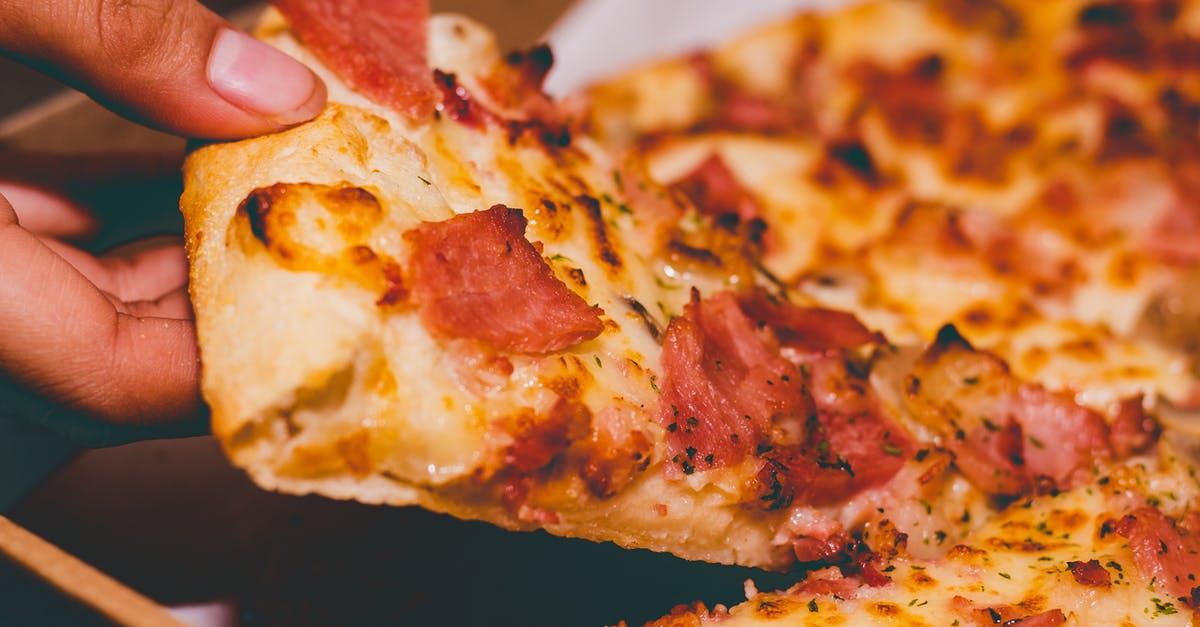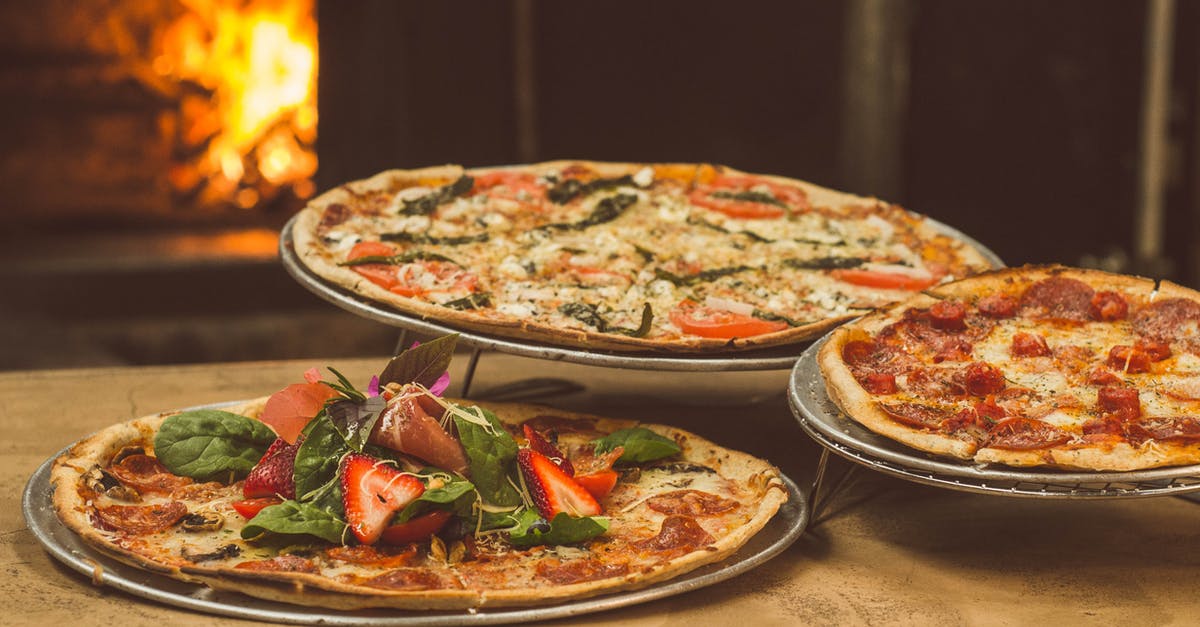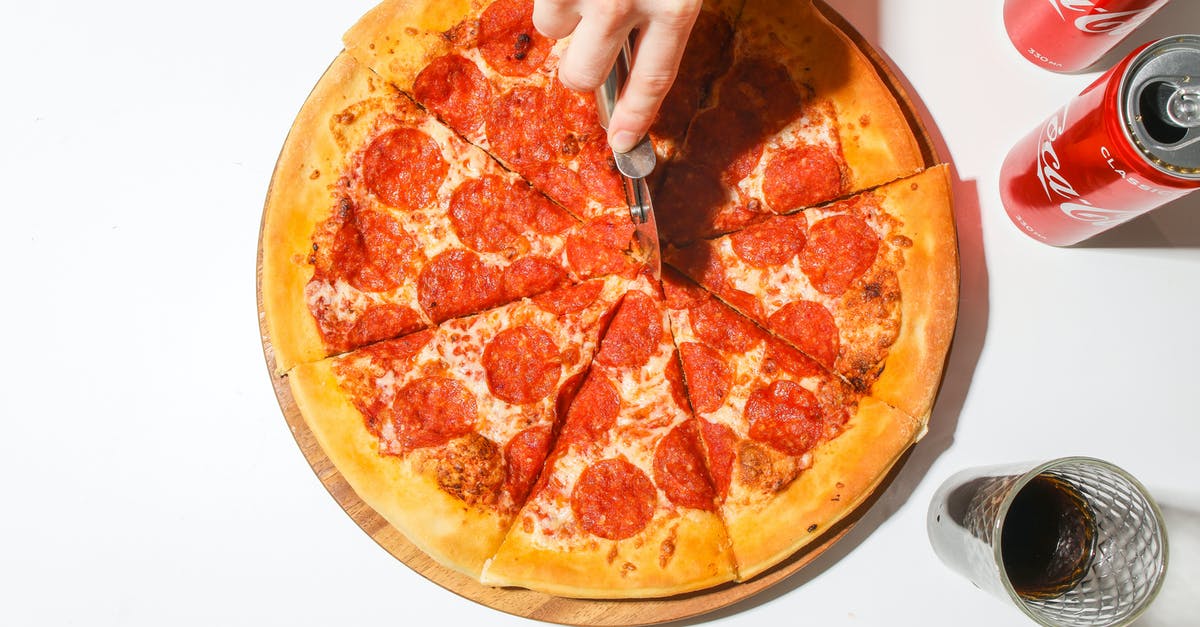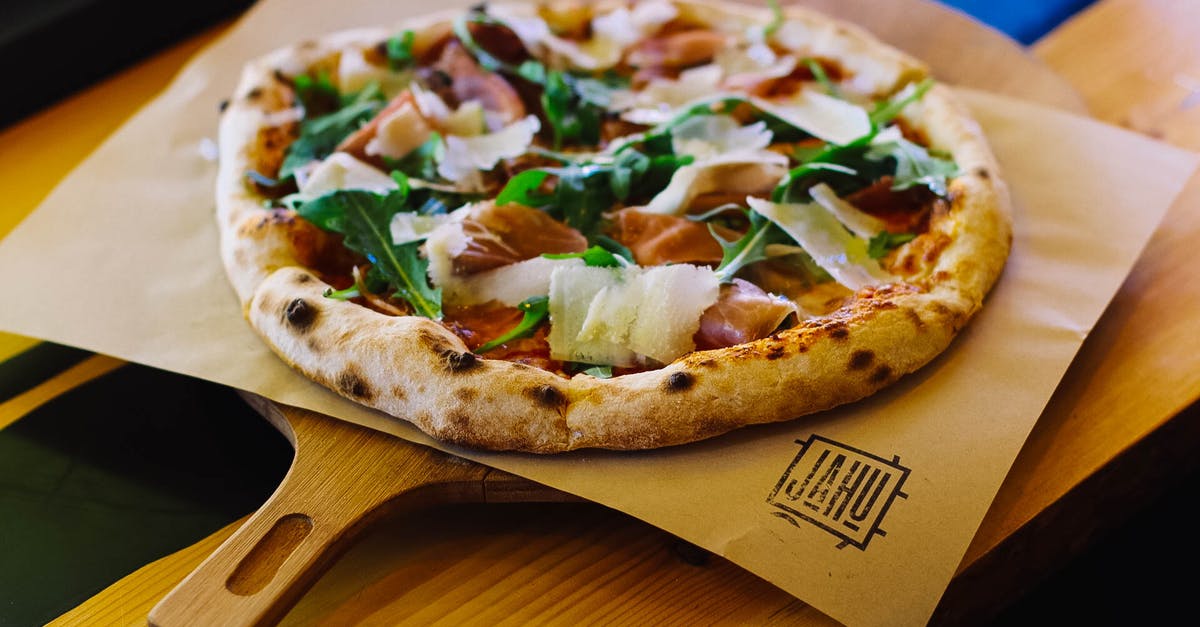Gluten Free Thin Crust Pizza - Tips and Explanation?

we have a gluten-free pizza crust recipe that works out pretty well. Since I'm relatively new to GF (we recently found out that my wife has Celiac), I'm curious as to how the recipe works and what difference some of the changes we've made have on the outcome. I'm also looking for any pointers to help make the crust a little less "scratch the roof of your mouth like Captain Crunch." Overall, it comes out nice and crispy, but perhaps just a little too much.
The recipe:
Ingredients
-----------
> Yeast mixture
1 1/3 cup warm milk
1 teaspoon sugar
2 tablespoons rapid rise yeast
- we've taken to using 1 tablespoon of pizza dough yeast instead
> Dry Mix
1 cup tapioca flour
2 teaspoons unflavored gelatin powder
2 teaspoons dried italian seasoning
1 teaspoon salt
2 teaspoons xantham gum
1 1/3 cups brown rice flour
Directions
----------
First, I mix the yeast mixture. Pizza dough yeast seems to work better and give a
slightly better crust than plain rapid rise.
? I've always had trouble getting the yeast to really dissolve completely, there's
usually chunks left in the milk unless I whisk for a good 15 minutes. Can I use a
kitchen mixer to achieve a better dissolve?
In a separate bowl, I combine the dry ingredients. Then, I mix the yeasty milk into
the dry ingredients and finally mix in 2 teaspoons olive oil and 2 teaspoons apple cider
vinegar.
? We accidentally mixed in 2 tablespoons of olive oil and apple cider vinegar once,
but didn't really notice a difference. What exactly are they helping with in the recipe
and why didn't such a gross overmeasurement make a difference?
Next, I butter and flour a baking sheet and then plop the dough down. I flour my
hands and the dough and spread it until it's nice and thin across the sheet. I rub olive
oil into the patted down dough and then cook untopped for 10 minutes in a 450 degree
oven. Remove and add toppings and return to the oven for 20 minutes.
Any tips and maybe some general explanation of what's going on here would be appreciated - so far this has been the quickest and best thin crust GF recipe we've done.
Edit: We also mix everything by hand - would using our mixer and/or dough hooks make any noticeable difference?
Best Answer
Traditional yeast based pizza crust is essentially a yeast raised flat bread. Its structure and chewiness is the result of gluten development from the wheat proteins—the very aspect you are trying to avoid.
The recipe that you have has three basic components:
- Yeast, to develop some of the yeasty flavors
- Starch which will form the matrix of the crust (tapioca, brown rice flour)
- Gums or thickeners to give it enough structure and strength to hold together cohesively (gelatin, xantham gum)
There is nothing in the formula you have provided which should be scraping the roof of your mouth like the infamous breakfast cereal. The closest thing to a suspect is the rice flour, which if it is brown, is milled from the whole rice grain, including the outer hull or husk. That might be what you are finding texturally unpleasant. You might try another brand of rice flour, or using white rice flour in its stead.
It may also be from over baking--if you are only getting the abrasive texture from the edges where it is most cooked, you know that you should simply cook it less.
Pictures about "Gluten Free Thin Crust Pizza - Tips and Explanation?"



How does gluten free flour affect pizza dough?
In the same way that gluten affects the rise of your dough, it also influences the elasticity of your dough. Gluten free dough is often less stretchy that traditional pizza dough and because of this, it's important that your press your dough to stretch it out instead of rolling it.What is gluten free pizza crust made of?
Water, Modified Rice Starch, Rice Flour, Brown Rice Flour, Potato Starch, Olive Oil, Potato Flour, Evaporated Cane Sugar, Fresh Yeast, Honey, Avicel, Salt, Calcium Propionate. Note: Avicel functions as a fat replacer in Gluten Free crusts.How do you make gluten free pizza dough more elastic?
Benefits of Gluten-Free Pizza Crust- Gives you more energy: Following a gluten-free diet can help lower cholesterol levels and improve your digestions. ...
- Helps with your pizza belly: While gluten alone will not make you lose weight, it can help bring down the bloating most of us experience when eating gluten.
Science: Secrets to Making \u0026 Baking the Best Gluten-Free Pizza Dough
Sources: Stack Exchange - This article follows the attribution requirements of Stack Exchange and is licensed under CC BY-SA 3.0.
Images: Ragga Muffin, Narda Yescas, Polina Tankilevitch, Kristina Paukshtite
